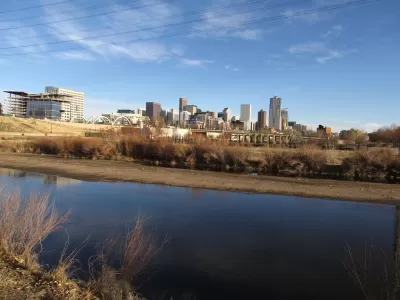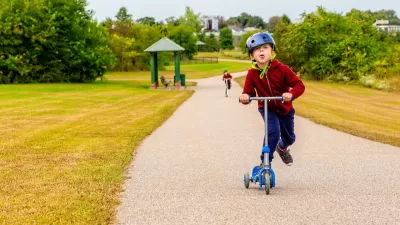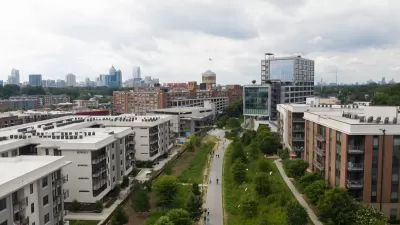After a 14-year battle to bring the project to life, the Platte Farm Open Space brings much-needed green space to a north Denver neighborhood.

"This past summer, the Center for American Progress and the Hispanic Access Foundation released a report finding that communities of color experience 'nature deprivation' at three times the rate of white Americans," writes Ambika Chawla. "According to the report, 74% of communities of color live in nature-deprived areas, with Black communities experiencing the highest levels of deprivation." A 2019 study from the University of British Columbia that analyzed ten U.S. cities concluded that "the widespread green inequities uncovered by this research are serious issues in the context of the effects of urban vegetation on urban health and well-being." Urban residents with less access to green space "are also those who are most likely to experience poor public health outcomes that could potentially be mitigated by adequate exposure to urban vegetation."
In Denver, the Platte Farm Open Space provides an example of a successful community-led project that transformed a former brownfield site in a working-class neighborhood into a vibrant community amenity. "Through a process of remediation, contaminated land was replaced with fresh layers of topsoil, and is now home to prairie habitat that attracts foxes, rabbits, birds and butterflies." The project was "a collaborative effort between the community members of Globeville, the city of Denver, and Groundwork Denver, a nonprofit organization that works to create green spaces to help improve community health."
While several factors—including the city of Denver's recent commitment to create an open space within a 10-minute walk of all residents—came together over close to a decade and a half to make Platte Farm a reality, urban park advocates know they face a long uphill battle to achieving park equity in Denver and elsewhere. "Limited financial resources for environmental justice organizations, green gentrification, and redlining are among the many obstacles that have resulted in inequitable access to green space, worsening health disparities among urban communities."
Research increasingly shows that access to parks and urban vegetation have positive effects on physical and mental health. "Benefits may include improved cognitive development and functioning, reduced symptom severity of attention deficit hyperactivity disorder, reduced obesity, and positive impacts on mental health." Many of these are related to the opportunity for higher rates of physical activity in neighborhoods with more access to green spaces, signaling that park access, more than a pleasant amenity, is an essential component of healthy neighborhoods.
FULL STORY: Denver Shows What It Takes to Level the Park-Access Playing Field

Study: Maui’s Plan to Convert Vacation Rentals to Long-Term Housing Could Cause Nearly $1 Billion Economic Loss
The plan would reduce visitor accommodation by 25,% resulting in 1,900 jobs lost.

North Texas Transit Leaders Tout Benefits of TOD for Growing Region
At a summit focused on transit-oriented development, policymakers discussed how North Texas’ expanded light rail system can serve as a tool for economic growth.

Why Should We Subsidize Public Transportation?
Many public transit agencies face financial stress due to rising costs, declining fare revenue, and declining subsidies. Transit advocates must provide a strong business case for increasing public transit funding.

How to Make US Trains Faster
Changes to boarding platforms and a switch to electric trains could improve U.S. passenger rail service without the added cost of high-speed rail.

Columbia’s Revitalized ‘Loop’ Is a Hub for Local Entrepreneurs
A focus on small businesses is helping a commercial corridor in Columbia, Missouri thrive.

Invasive Insect Threatens Minnesota’s Ash Forests
The Emerald Ash Borer is a rapidly spreading invasive pest threatening Minnesota’s ash trees, and homeowners are encouraged to plant diverse replacement species, avoid moving ash firewood, and monitor for signs of infestation.
Urban Design for Planners 1: Software Tools
This six-course series explores essential urban design concepts using open source software and equips planners with the tools they need to participate fully in the urban design process.
Planning for Universal Design
Learn the tools for implementing Universal Design in planning regulations.
City of Santa Clarita
Ascent Environmental
Institute for Housing and Urban Development Studies (IHS)
City of Grandview
Harvard GSD Executive Education
Toledo-Lucas County Plan Commissions
Salt Lake City
NYU Wagner Graduate School of Public Service





























